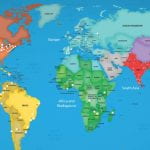For the past year, we’ve been looking for ways to build community, and we kept coming back to the power of food as the place where community, culture, values, and family meet. At Arrupe Initiatives, we’ve chosen food as an overarching topic for the semester as it allows us to dig deeper into a conversation about injustice, healing, and reconciliation while fostering a sense of solidarity.
The following is an excerpt of the Joy of Food by National geographic which exemplifies the historical power of food as a tool for community building:
Food is more than survival. With it, we make friends, court lovers, and count our blessings. The sharing of food has always been part of the human story. From Qesem Cave near Tel Aviv comes evidence of ancient meals prepared at a 300,000-year-old hearth, the oldest ever found, where diners gathered to eat together. Retrieved from the ashes of Vesuvius: a circular loaf of bread with scoring marks, baked to be divided. “To break bread together,” a phrase as old as the Bible, captures the power of a meal to forge relationships, bury anger, provoke laughter. Children make mud pies, have tea parties, trade snacks to make friends, and mimic the rituals of adults. They celebrate with sweets from the time of their first birthday, and the association of food with love will continue throughout life—and in some belief systems, into the afterlife. Consider the cultures that leave delicacies graveside to let the departed know they are not forgotten. And even when times are tough, the urge to celebrate endures. In the Antarctic in 1902, during Robert Falcon Scott’s Discovery expedition, the men prepared a fancy meal for Midwinter Day, the shortest day and longest night of the year. Hefty provisions had been brought on board. Forty-five live sheep were slaughtered and hung from the rigging, frozen by the elements until it was time to feast. The cold, the darkness, and the isolation were forgotten for a while. “With such a dinner,” Scott wrote, “we agreed that life in the Antarctic Regions was worth living.” — Victoria Pope









